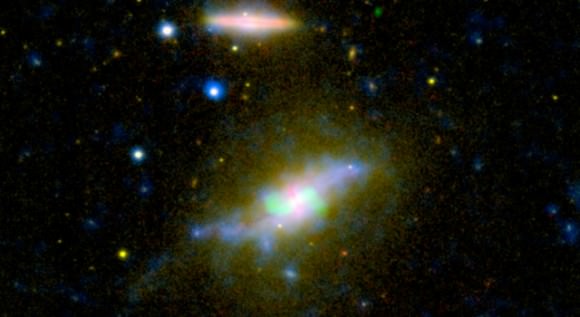

| Visitors Now: | |
| Total Visits: | |
| Total Stories: |

| Story Views | |
| Now: | |
| Last Hour: | |
| Last 24 Hours: | |
| Total: | |
Supernova Explosions, Black Hole Jets Might Cause Galaxies to ‘Age’ Faster

Time is running out for the galaxy NGC 3801, seen in this composite image combining light from across the spectrum, ranging from ultraviolet to radio. NASA's Galaxy Evolution Explorer and other instruments have helped catch the galaxy NGC 3801 in the act of destroying its cold, gaseous fuel for new stars. Astronomers believe this marks the beginning of its transition from a vigorous spiral galaxy to a quiescent elliptical galaxy whose star-forming days are long past. Image credit: NASA/JPL-Caltech/SDSS/NRAO/ASIAA
Supernova explosions and the jets of a monstrous black hole are scattering one galaxy’s star-making gas, driving a dramatic transformation from spiral galactic youth to elderly elliptical, according to a new study of a recently merged galaxy. Cool gas, the fuel from which new stars form, is essential to the youth and vigor of a galaxy. But supernova explosions can start the decline in star formation, and then shock waves from the supermassive black hole finish the job, turning spiral galaxies to “red and dead” ellipticals.
(…)
Read the rest of Supernova Explosions, Black Hole Jets Might Cause Galaxies to ‘Age’ Faster (674 words)
© nancy for Universe Today, 2012. | Permalink | No comment |
Post tags: galaxies, GALEX
Feed enhanced by Better Feed from Ozh
Source:


